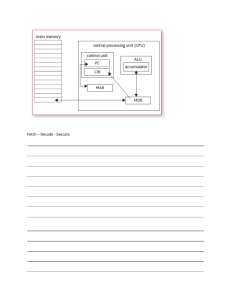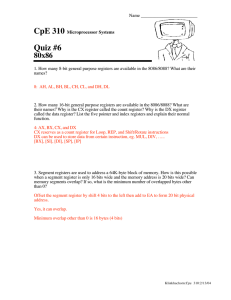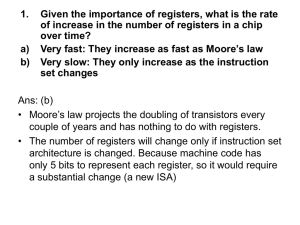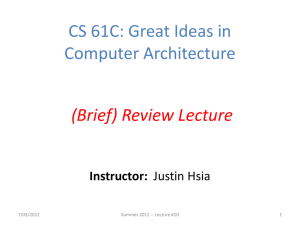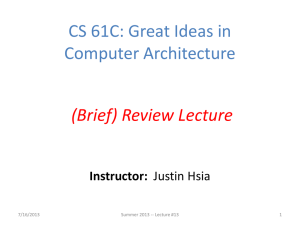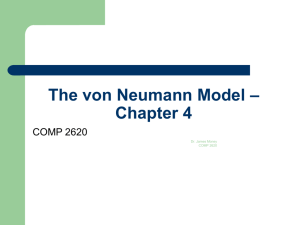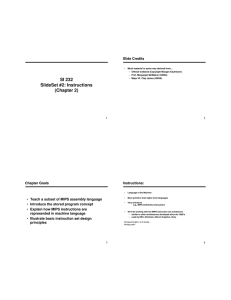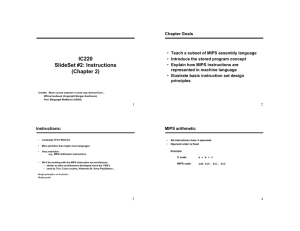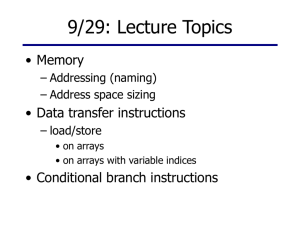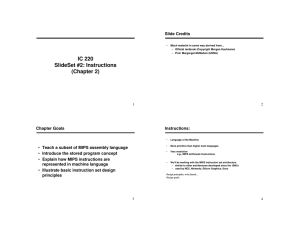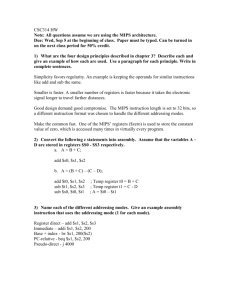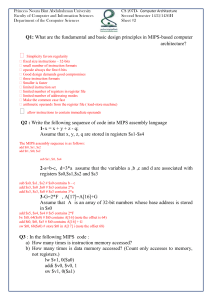Set 1
advertisement
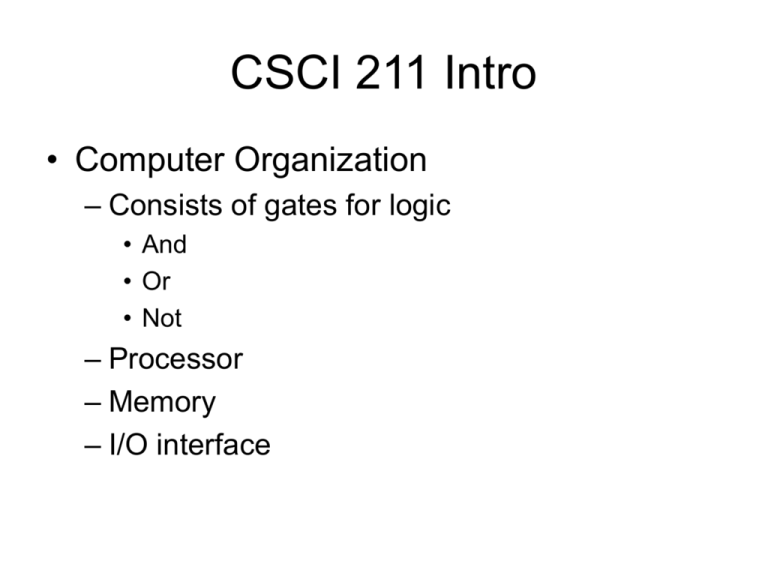
CSCI 211 Intro • Computer Organization – Consists of gates for logic • And • Or • Not – Processor – Memory – I/O interface Instructions • Instructions are in memory – Fetch instruction, then execute it • Fetch execute cycle – More detailed • • • • • Fetch instruction Fetch operands Execute instruction Save result Determine next instruction Processor Components • Datapath – Hardware that electrons flow through to accomplish an instruction • Control – Tells hardware what to do and when to do it. • Registers – Small amount of memory (32 4-byte for MIPS) that can be operated upon. What’s inside • Everything in the computer is represented with 0’s and 1’s (on-off) – Integers – Characters – Boolean – Float – Instructions (machine language) Languages • Machine Language – Just 0’s and 1’s – Very hard to program • Assembly – Symbolic for machine language – Easy to create a program to translate from assembly language to machine language (almost 1 to 1) – Keeps track of variables’ addresses Why Learn Assembler • Understand what the machine does – Helps you to be a better guesser • • • • • • Needed to write a compiler (431) Needed to build CPUs Faster to execute To determine timing Gives you the power to access anything Maintaining older systems Why not USE assembly • • • • • Tedious Error prone Slow to write Machine dependent Good compilers produce fast code already MIPS CPU • Used in many systems – SGI workstations – Sony PS2 – Dish Network set top box – Tivo DVR – Pioneer Plasma TV – HP Color laser printer – Many more MIPS Layout • Control • Register file (32 registers with 32 bits each) • ALU • Program Counter (PC) • Memory – 32 bit address (232 bytes addressable = 4Gb) • Instruction register (IR) Control Unit • Sends the proper control signals to each component to accomplish instruction • Input to the control unit – Instruction – Cycle number – which step of the instruction Register File • A group of registers • Input – Which register (5 bits) – Read or Write – 32 bit value (for write) – Outputs a 32 bit value for read Register Conventions • • • • • $0 = 0 $1 – used by the assembler $2, $3 – function return values $4-$7 – Arguments to a function Etc. Other components • ALU – Performs arithmetic and logic (and, or, shift) • PC – Program counter – address of next instruction • Memory – 32 bit address – Addresses a byte (8 bits) – Some instructions use word (4 bytes), halfword (2 bytes), or byte operands – All instructions are 4 bytes (on MIPS) • PC=PC+4 Instruction Register • IR – Holds the 32 bit instruction just fetched – Needed for control unit to determine what control signals to send Instruction Format • Opcode – First 6 bits • 3 Formats – R type • Opcode all 0’s • Three 5-bit fields for registers (2 for operand, 1 for result) • 5-bit shift amount (for shift instructions) • 6-bit function code Other formats • I Type – Two 5-bit register numbers – 16-bit value as the third operand • J type – Jump instructions – 26 bit address field (64M)
